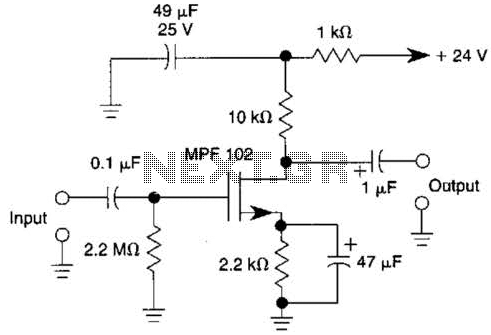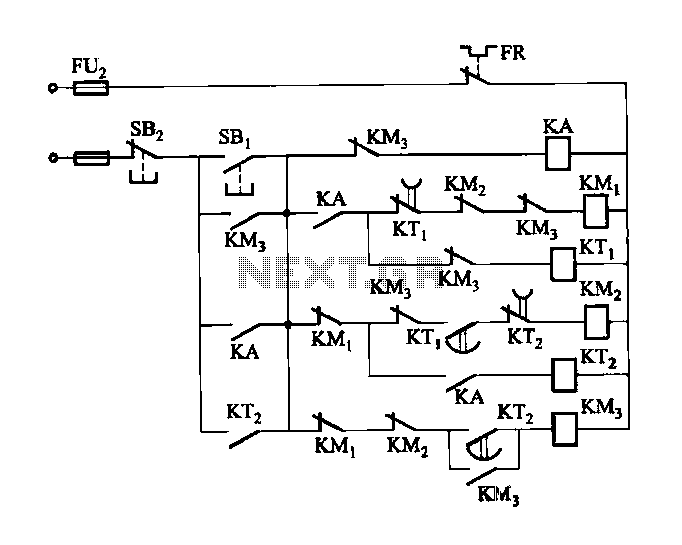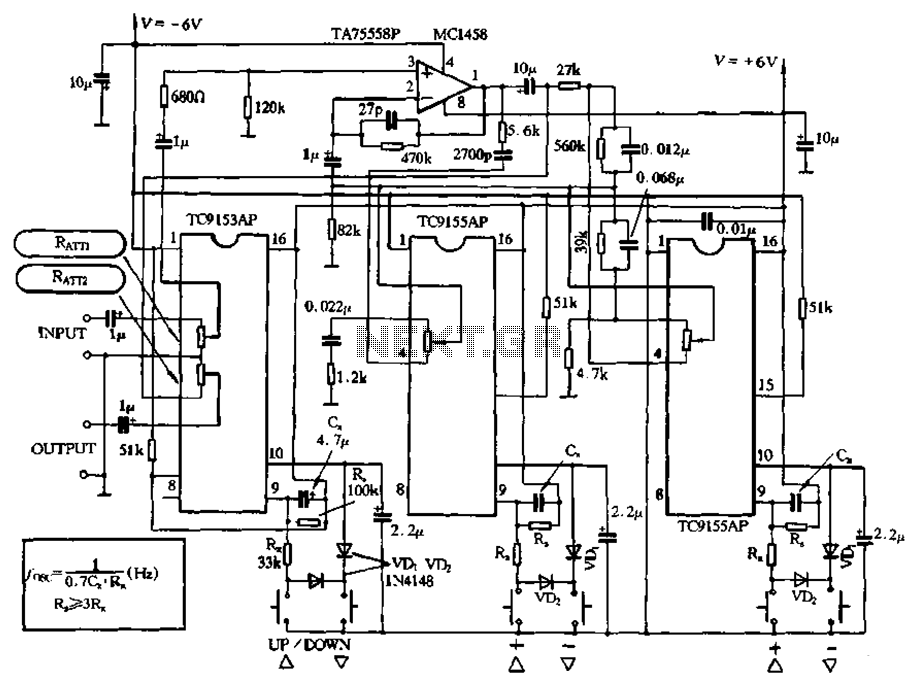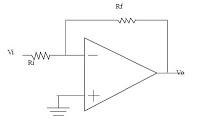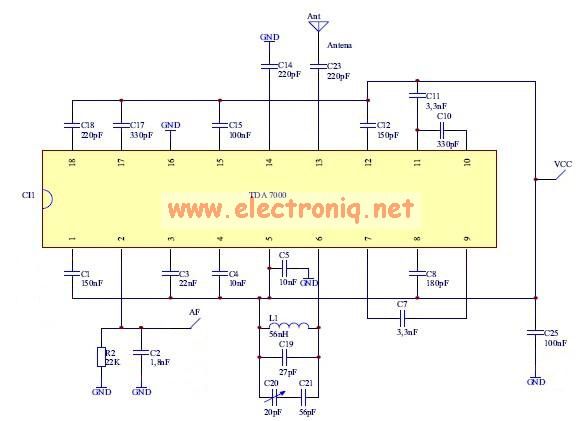
The inverter circuit diagram composed of NE555
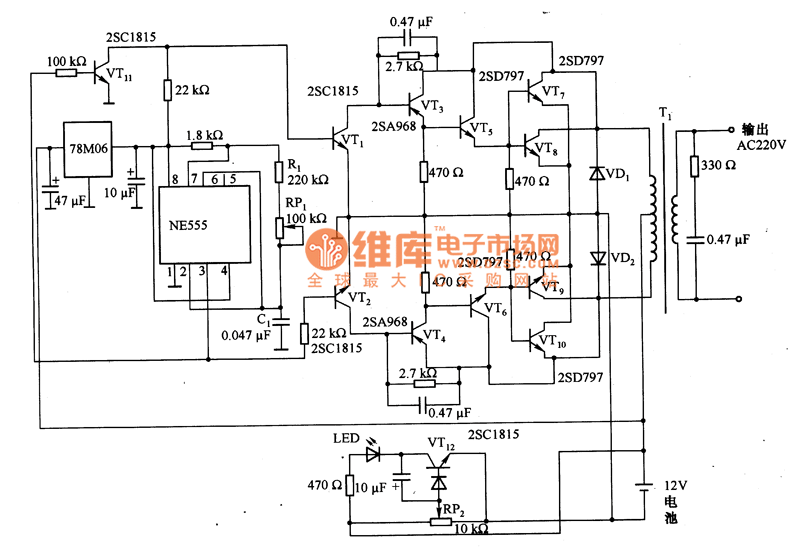
The inverter circuit diagram utilizing the NE555 timer is illustrated, designed to convert a +12V DC battery voltage into a 220V AC output voltage. In this circuit, the NE555 functions as an oscillator, with the oscillation frequency determined by resistors R1, RP1, and capacitor C1. By adjusting the resistance of RP1, the frequency can be set to 50Hz, with one output pulse signal from pin 3 of the NE555 directly applied.
The NE555 timer is a versatile integrated circuit widely used for generating precise time delays and oscillations. In this inverter application, it operates in astable mode, producing a continuous square wave output. The frequency of oscillation, which is critical for the inverter's performance, is calculated using the formula:
\[ f = \frac{1.44}{(R1 + 2 \cdot RP1) \cdot C1} \]
Where:
- \( f \) is the frequency in Hertz (Hz)
- \( R1 \) is a fixed resistor
- \( RP1 \) is a variable resistor (potentiometer) used for fine-tuning
- \( C1 \) is the timing capacitor
To achieve a stable output of 50Hz, the values of R1, RP1, and C1 must be selected carefully. For instance, if R1 is set to 1kΩ and C1 is 100µF, adjusting RP1 will allow the user to reach the desired frequency.
The output from pin 3 of the NE555 is a square wave that toggles between the supply voltage and ground. This square wave is then utilized to drive a transformer, which steps up the voltage to 220V AC. The transformer must be rated to handle the power requirements of the load connected to the inverter.
In addition to the basic components mentioned, it is advisable to incorporate protective elements such as diodes to prevent back EMF from damaging the NE555 and other components. Capacitors may also be added to filter the output, ensuring a cleaner AC signal.
Overall, this inverter circuit is a practical solution for converting low-voltage DC to high-voltage AC, suitable for various applications, including powering small appliances and electronics. Proper design and component selection are essential to ensure reliable operation and efficiency.The inverter circuit diagram composed of NE555 is shown as the chart, and it can turn +12V DC battery voltage to 220V AC output voltage. In the circuit, NE555 circuit is the oscillator, the oscillation frequency is decided by the R1, RP1 and C1, and adjusting the resistance of RP1 in 50HZ, one way of the pulse signal output by NE555`s pin 3 is directly added..
🔗 External reference
The NE555 timer is a versatile integrated circuit widely used for generating precise time delays and oscillations. In this inverter application, it operates in astable mode, producing a continuous square wave output. The frequency of oscillation, which is critical for the inverter's performance, is calculated using the formula:
\[ f = \frac{1.44}{(R1 + 2 \cdot RP1) \cdot C1} \]
Where:
- \( f \) is the frequency in Hertz (Hz)
- \( R1 \) is a fixed resistor
- \( RP1 \) is a variable resistor (potentiometer) used for fine-tuning
- \( C1 \) is the timing capacitor
To achieve a stable output of 50Hz, the values of R1, RP1, and C1 must be selected carefully. For instance, if R1 is set to 1kΩ and C1 is 100µF, adjusting RP1 will allow the user to reach the desired frequency.
The output from pin 3 of the NE555 is a square wave that toggles between the supply voltage and ground. This square wave is then utilized to drive a transformer, which steps up the voltage to 220V AC. The transformer must be rated to handle the power requirements of the load connected to the inverter.
In addition to the basic components mentioned, it is advisable to incorporate protective elements such as diodes to prevent back EMF from damaging the NE555 and other components. Capacitors may also be added to filter the output, ensuring a cleaner AC signal.
Overall, this inverter circuit is a practical solution for converting low-voltage DC to high-voltage AC, suitable for various applications, including powering small appliances and electronics. Proper design and component selection are essential to ensure reliable operation and efficiency.The inverter circuit diagram composed of NE555 is shown as the chart, and it can turn +12V DC battery voltage to 220V AC output voltage. In the circuit, NE555 circuit is the oscillator, the oscillation frequency is decided by the R1, RP1 and C1, and adjusting the resistance of RP1 in 50HZ, one way of the pulse signal output by NE555`s pin 3 is directly added..
🔗 External reference
Warning: include(partials/cookie-banner.php): Failed to open stream: Permission denied in /var/www/html/nextgr/view-circuit.php on line 713
Warning: include(): Failed opening 'partials/cookie-banner.php' for inclusion (include_path='.:/usr/share/php') in /var/www/html/nextgr/view-circuit.php on line 713
